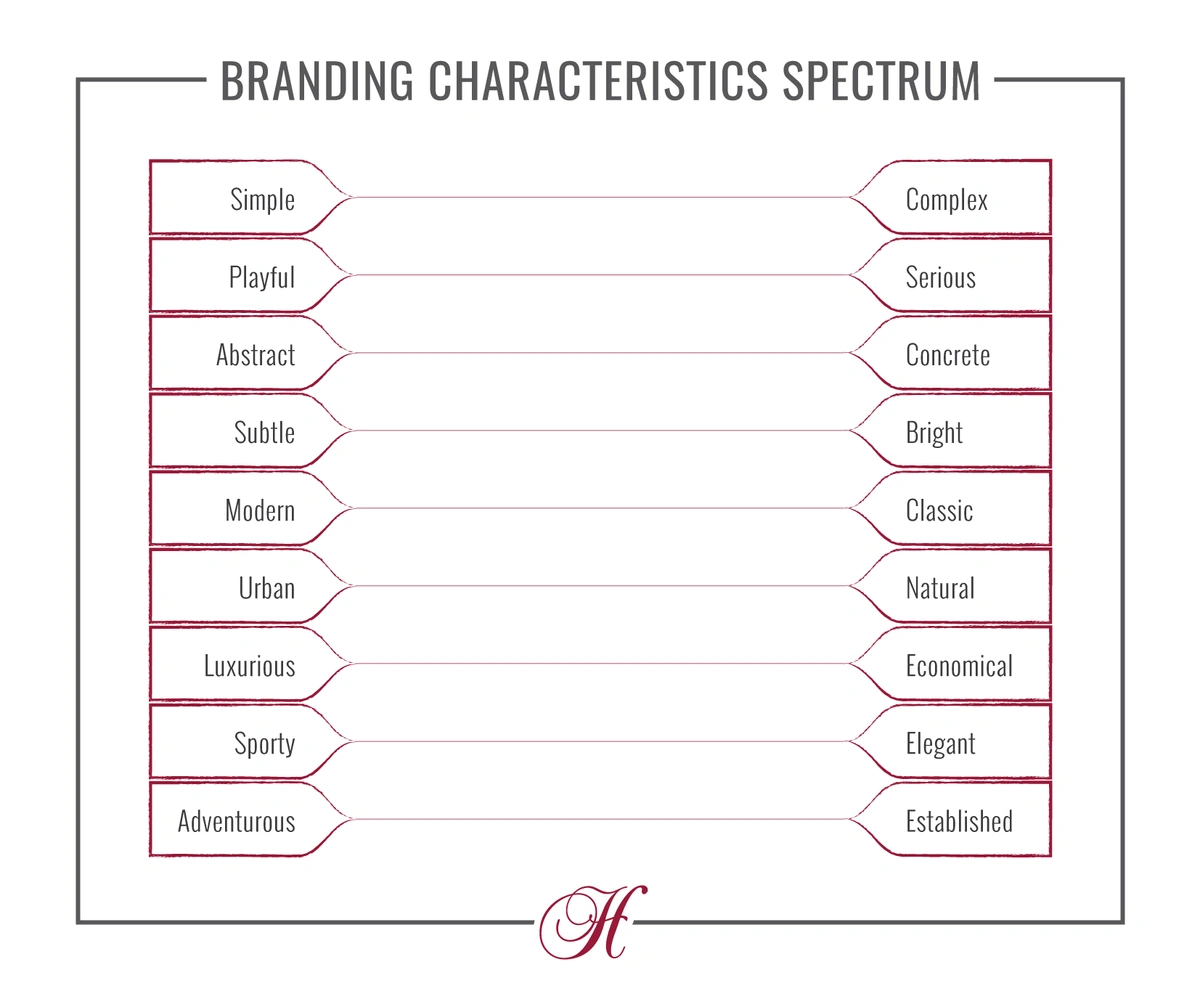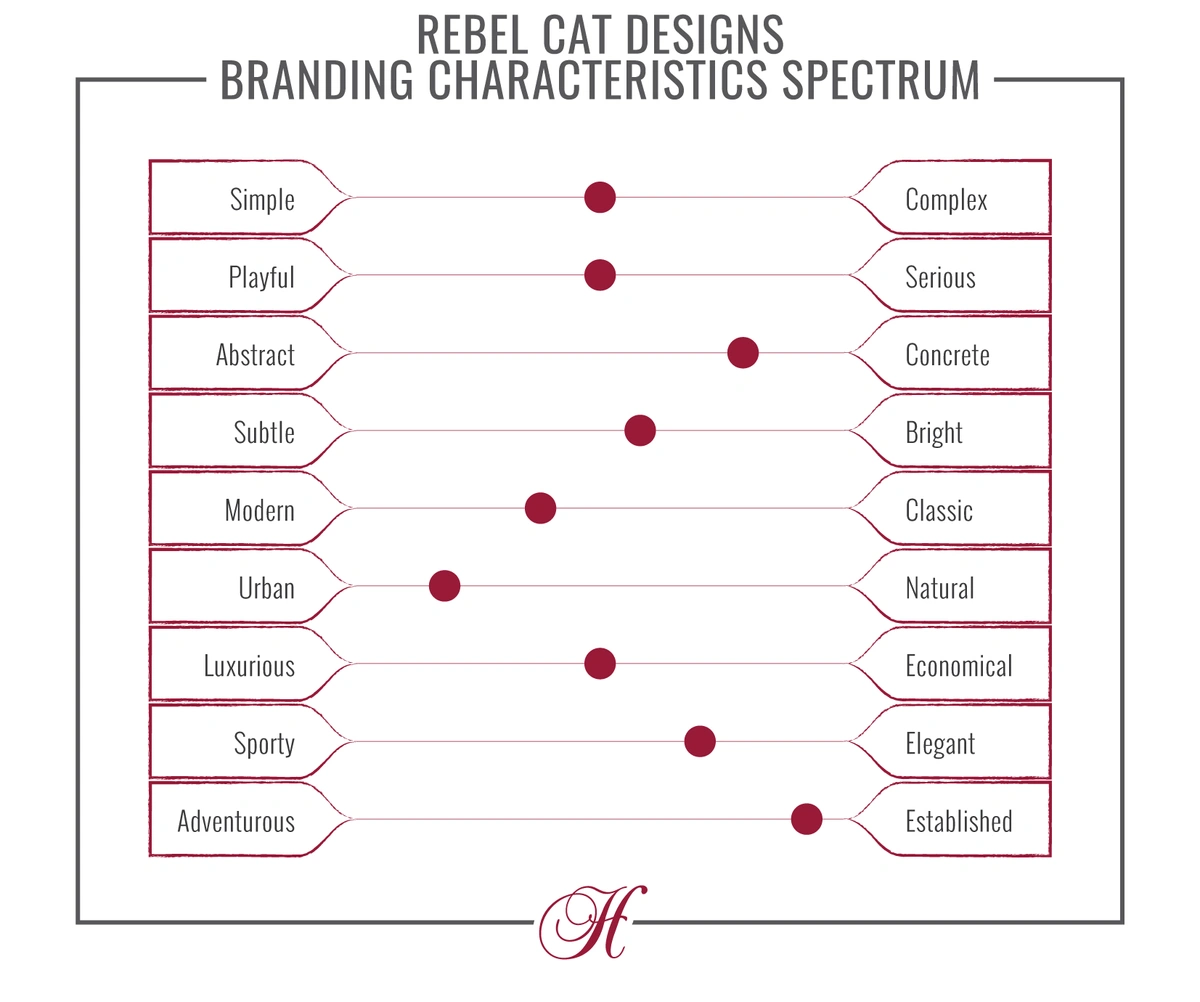Targeting your customers properly is the foundation of successful marketing campaigns. Read on for tips to make sure you understand your customers and make the most out of your marketing strategy.
A key part of successfully marketing your jewelry business is to understand who your customer is and how to target them. You can’t sell to everyone. Instead, you figure out who your ideal customer is and focus your marketing attention on them.
Understand Your Brand
In order to understand who you’re selling to, you need to make sure you understand what you’re selling. Below is an example of how to create your jewelry branding. Is your jewelry: Playful or serious? Modern or classic? Sporty or elegant? And of course it can be a mixture of both, but you’ll want to know how you describe your jewelry and which way it tends to lean. Understanding your brand’s mission will help you identify groups of people to target. This will also help you design all of your visuals and messaging for your brand.
LEARN MORE ABOUT CREATING YOUR BRAND >>
Below is an example of how to define your brand characteristics:
How to Find Your Target Jewelry Customer Audience
It’s not in your best interest to try and sell to every single type of person. You’re likely going to find that you’re wasting money, time, and energy. Instead, you want to focus your attention on the group of people most likely to purchase from your business.
Use Existing Data
If possible start with your easiest option: existing customers. Learn as much as you can about your current customers. Some of this information might be easy to get, such as how many men vs. women buy from your jewelry business. You may want to consider a post-purchase customer survey to learn more information about your customers.
Customers are often willing to fill out surveys if you offer something such as a discount or entry into a prize drawing. Many companies ask their customers basics such as their age range, income range, career field, etc.; So, consumers are used to these types of questions. Avoid trying for anything too specific though, such as exact numbers or titles.
Create Your Ideal Customer
Here’s where understanding your brand comes in handy. Knowing your brand will help you know who you want to target and who your ideal customer is. This ideal customer is going to be a specific “person” that represents your target audience. You might even want to name your ideal customer so you can connect with them as a customer.
Keep in mind that real-life customers won’t always fit into the perfect box of your ideal customer. This is just a starting point for your marketing purposes.
Who Your Customer Is
Describe the basic information about your ideal customer. How old are they? Keep an age range, such as 25-35, in mind. Are they male or female? What kind of career do they have? Maybe they’re a high-powered CEO, an established mid-level manager, an entry level beginner, or maybe they’re a stay-at-home parent. Do they have a decent amount of disposable income? Or is jewelry still a special treat for them? Perhaps your ideal customer has a college degree, or maybe they’re on the self-made side. Is your ideal customer a parent, single, or somewhere in-between?
How Your Customer Thinks
It’s time to dig into how your customer lives and thinks. What sort of lifestyle do they have? Does your ideal customer live in a big city or are they fans of the open outdoors? Think about what sort of values they might have. The biggest example of this is sustainability and eco-friendliness, but there are many others such as family, creativity, diversity, spirituality, etc. What kind of interests does your ideal customer have? Are they happiest doing outdoor activities, are they obsessed with their plants or pets, or are they avid readers?
Where Your Customer Lives
Think about your customer’s geographic location. Don’t get too pinned down on an exact location, especially for online sales. But think about where they live and how that affects their being your customer. Does your ideal customer live a glamorous life in a big city or do they live simpler in a small town? Are they laid back on the beaches of the west coast? Retired in Florida? In the deserts of the Southwest? You may also have to consider their country if you sell internationally.
Example Ideal Jewelry Customer Profile
Let’s create an ideal customer profile for a fictional jewelry business, Rebel Cat Designs (created by Janelle in her branding and graphic design blog). Here is the branding characteristics spectrum for Rebel Cat Designs.
So what is the rebel cat brand identity? It’s high end style jewelry with a fun twist that is sophisticated and fun. Since the name is based off Janelle’s smart and rebellious cat, we want customers to feel welcomed and get a sense of fun from our branding.
Based on this information, our ideal Rebel Cat customer is:
- Female
- Late 20s – 30s
- Establishing herself in a professional career
- She likely has a college degree
- She has disposable income and likes to treat herself, but not enough to justify the typical high-end jewelry
- She’s likely single
- She’s a busy woman with her career, hobbies, and friends.
- She is a modern woman who values her independence, has a bit of a rebellious streak, isn’t necessarily afraid to speak her mind, and is confident enough to stand out in a crowd
- She’s a dog and/or cat mom who likes to take her furbabies on adventures
- She is most likely living in a metropolitan area or a quickly developing mid-to large sized town.
- She’s not going to be found on the glamorous side of town, but is more likely to find the unique local favorites
We’re going to sum up our audience as “Young working women who want sophisticated looking jewelry with a unique twist but would balk at spending $100 on a single piece.”
How to Target Your Ideal Jewelry Customer
Now that you know your ideal customer, it’s easy to find your target audience and where you’ll find success in marketing to them. In our Rebel Cat example, when we convert our ideal customer into a target audience it will probably look something like:
- Women ages 27 – 40
- College educated
- Professional careers
- Income range $40,000 to $60,000
- Interests include pets, pet-friendly travel, local businesses
- Target locations might include larger cities and their surrounding smaller areas
Know Your Platforms
Knowing the demographics of a platform is key to targeting your ideal customers. Check out this 2021 Pew Research survey to get an idea of the audience on each platform and how they align with your target audience. Based on this survey, Rebel Cat would probably want to have a presence on Facebook, Instagram, YouTube, and Tik Tok. But we would probably want to put our main focus on Instagram.
LEARN HOW TO TARGET CUSTOMERS WITH THE RIGHT INFLUENCER >>
Set Up Targeted Advertising
Based on your ideal customer and target audience, you may choose to focus any advertising spend on a certain platform. Google and Facebook are the largest advertising opportunities available for businesses (remember Facebook Ads also controls ads on Instagram). Both of these platforms allow you to narrow down a target audience based on demographics such as age, gender, location, income, etc. Google also allows you to narrow your audience by search history. Facebook allows you to target users based on their job title, when a user makes that public. Each platform has a variety of targeting options for you to look at.
Construct Your Messaging
Knowing your audience helps you understand how to interact with your customers on social media and emails as well. In our Rebel Cat example, since we know our audience loves their pets and taking them on adventures we might also create and share content about fun local places that we’ve taken our dog. Even if our social media followers aren’t local to us, they will likely find it fun and interesting. You don’t want to overdo the non-jewelry content, but if it will resonate with your audience it’s good to mix it in.
For more jewelry marketing tips check out:
Making It Personal: Connect with your Jewelry Customers
5 Video Marketing Ideas for Your Jewelry Business
Subscribe now to receive new jewelry business content from Halstead!










